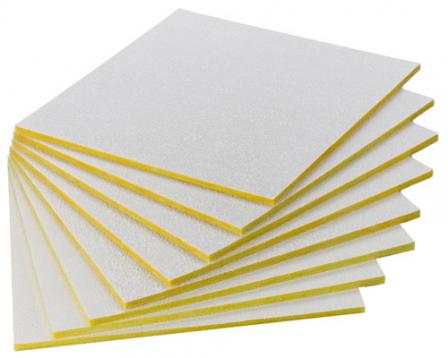Foams are materials composed of gas bubbles separated from one another by liquid or solid sheets. Plastic foams are solid foams in which the gas can be considered as a lightweight filler or extender of the plastic phase. One of the major applications of foamed plastic is for insulation of buildings and pipes because of desirable attributes such as the ability to trap heat, light weight, and ease of installation. To reduce combustibility, however, brominated flame retardants must be added to plastic foams. The use of plastic foams can be problematic. During a fire, plastic foams may release toxic gases such as hydrobromic acid (HBr), styrene (from polystyrene foam), and hydrogen cyanide (from polyurethane foam). To add to the environmental burden, typical waste streams of scrap and end-of-life plastic foam insulation are not recyclable. In contrast, researchers reporting in the journal Materials Horizons (February 2021) have described the development of a plastic foam insulating material that is non-flammable, non-toxic, and recyclable. See also: Flameproofing; Foam; Heat insulation; Plastic waste pollution; Polystyrene; Polyurethane resins; Recycling technology

The new non-flammable plastic foam’s composition consists of a combination of poly(acrylic acid) [PAA] and the mineral calcium carbonate (CaCO3). On heating the mineral plastic foam, as would occur in the case of a fire, PAA, or (C3H4O2)n, decomposes to carbon dioxide (CO2) and water (H2O), while CaCO3 releases CO2—an inert gas—which contributes to retarding fire. All of these decomposition products are considered non-toxic, mitigating any toxic release into the environment. In addition, both scrap and end-of-life PAA/CaCO3 foam can be recycled for reuse by dissolving the material in hydrochloric acid (HCl), making this a truly sustainable advance in materials technology. See also: Chemical recycling of plastic waste; Green engineering; Polymer; Sustainability





